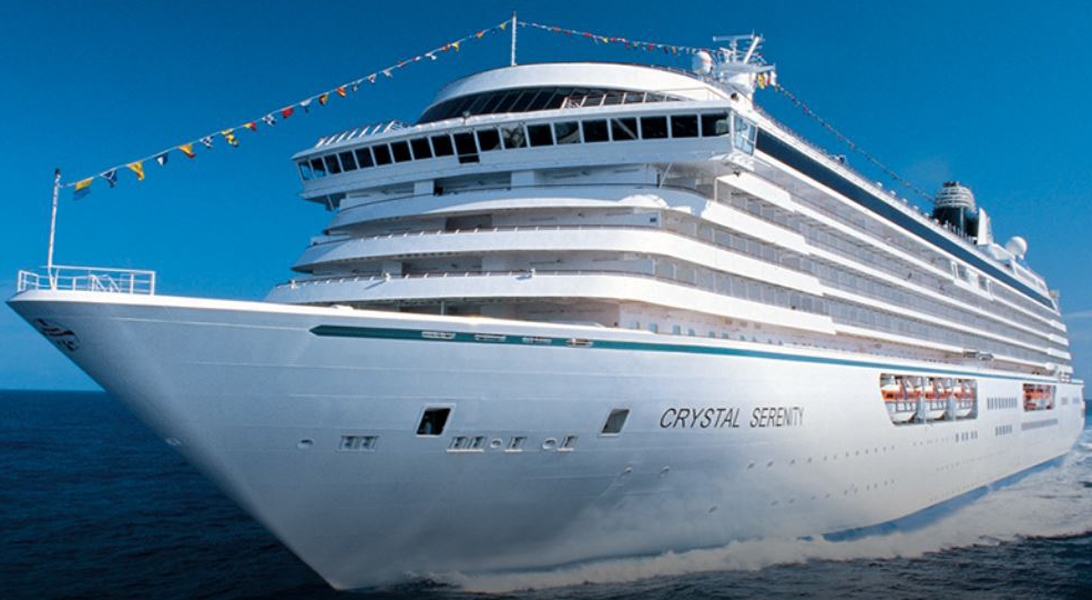| | | | | Arrive | Depart |
| 21st21 | SepSep | 202727 | Quebec City, Québec, Canada, embark on the Crystal Serenity | | 19:00 |
Québec City's alluring setting atop Cape Diamond (Cap Diamant) evokes a past of high adventure, military history, and exploration. This French-speaking capital city is the only walled city north of Mexico. Visitors come for the delicious and inventive cuisine, the remarkable historical continuity, and to share in the seasonal exuberance of the largest Francophone population outside France.The historic heart of this community is the Old City (Vieux-Québec), comprising the part of Upper Town (Haute-Ville) surrounded by walls and Lower Town (Basse-Ville), which spreads out at the base of the hill from Place Royale. Many sets of staircases and the popular funicular link the top of the hill with the bottom. Cobblestone streets, horse-drawn carriages, and elaborate cathedrals here are charming in all seasons. The Old City earned recognition as an official UNESCO World Heritage site in 1985, thanks largely to city planners who managed to update and preserve the 400-year-old buildings and attractions without destroying what made them worth preserving. The most familiar icon of the city, Fairmont Château Frontenac, is set on the highest point in Upper Town, where it holds court over the entire city.Sitting proudly above the confluence of the St. Lawrence and St. Charles rivers, the city's famous military fortification, La Citadelle, built in the early 19th century, remains the largest of its kind in North America. In summer, visitors should try to catch the Changing of the Guard, held every morning at 10 am; you can get much closer to the guards here than at Buckingham Palace in London.Enchanting as it is, the Old City is just a small part of the true Québec City experience. Think outside the walls and explore St-Roch, a downtown hot spot, which has artsy galleries, foodie haunts, and a bustling square. Cruise the Grande-Allée and avenue Cartier to find a livelier part of town dotted with nightclubs and fun eateries. Or while away the hours in St-Jean-Baptiste, a neighborhood with trendy shops and hipster hangouts. |
| 22nd22 | SepSep | 202727 | Sept-Iles, Québec, Canada | 08:00 | 18:00 |
Viewing the workings of this major Canadian port from a waterfront boardwalk, no one would guess this was once a quiet fishing village. The place boomed after World War II, when large companies decided Sept-Îles would make a good base for expanding northern Québec’s iron-mining industry. But all of the massive infrastructure can’t trump Mother Nature. Beautiful beaches line the coast, and the islands of an archipelago park sit just offshore. Campers and bird-watchers flock here, in part to spot the colorful beaks of the puffins. |
| 23rd23 | SepSep | 202727 | Havre-Saint-Pierre, Québec, Canada | 09:00 | 19:00 |
Havre St. Pierre is a tiny seaside port on the north shore of the Saint Lawrence River in Quebec. It was settled in 1857 by Acadians from the Magdalen Island, and still today locals speak a dialect more similar to Acadian French than to Quebec French. It was originally called Saint-Pierre-de-la-Pointe-aux-Esquimaux until 1927, when it was officially shortened to Havre St Pierre. Until recently the local economy relied mainly on fishing and lumbering, today it is mainly a titanium ore-transhipment port. Nearby is one of the world’s most amazing natural phenomena – the Mingan Archipelago. They are the largest group of erosional monoliths in Canada, and were declared a Nation Park in 1984. These limestone monoliths have formed over thousands of years by wave action, strong winds and seasonal freezing and thawing. The result is a unique set of large limestone sculptures. |
| 24th24 | SepSep | 202727 | At Sea | | |
| 25th25 | SepSep | 202727 | Gaspé, Québec, Canada | 07:00 | 16:00 |
| 26th26 | SepSep | 202727 | Magdalen Islands, Québec, Canada | 08:00 | 15:00 |
The Îles-de-la-Madeleine, or 'Magdalen Islands', form a small archipelago in the Gulf of Saint Lawrence with a land area of 79.36 square miles (205.53 square kilometres). Though closer to Prince Edward Island and Nova Scotia, the islands form part of the Canadian province of Quebec. Les Îles-de-la-Madeleine encompass eight major islands: Havre-Aubert, Grande Entrée, Cap aux Meules, Grosse-Île, Havre aux Maisons, Pointe-Aux-Loups, Île d'Entrée and Brion. All except Brion are inhabited. Several other tiny islands are also considered part of the archipelago: Rocher aux Oiseaux; Île aux Loups-marins; Île Paquet; and Rocher du Corps Mort. Although Europeans first arrived on the islands in the mid-1600s, Mi'kmaq Indians had been visiting the islands for hundreds of years, and numerous archaeological sites have been excavated on the archipelago. By the mid-18th century, the islands were inhabited by French-speaking Acadians, and administered as part of the colony of Newfoundland from 1763-1774, when they were annexed to Quebec by the Quebec Act. A segment of the population are English descendants from survivors of the over 400 shipwrecks on the islands. The construction of lighthouses eventually reduced the number of shipwrecks, but many old hulks remain on the beaches and under the waters. Until the 20th century, the islands were completely isolated during the winter months due to the pack ice that made the trip to the mainland impassable by boat. However, a new wireless telegraph station provided Magdalens with year-round communication with the outside world. In recent years, the pristine natural beauty of the Îles-de-la-Madeleine, along with the archipelago's strategic geographic location in the heart of the Gulf of Saint Lawrence, has made tourism an important part of the local economy. The well-preserved natural heritage, extraordinarily beautiful marine landscapes and exceptional coastline of the Îles-de-la-Madeleine offer visitors a unique opportunity to explore the area's natural splendour. The panoramic archipelago features dramatic red cliffs, rolling green hills, brightly-coloured houses, intimate inlets, hidden coves, and over 180 miles (290 kilometres) of honey-coloured and white-sand beaches; half of the archipelago's islands are linked by sand dunes. The Îles-de-la-Madeleine are also home to a wealth of diverse marine life, bird species, and flora and fauna to discover. The Îles-de-la-Madeleine offer a truly distinctive blend of Acadian, Madelinot, French and English cultures, traditions and communities that make this breath-taking archipelago a truly unforgettable destination. You can explore the people and history of the islands during visits to the many wonderful museums and interpretation centres, public areas and historical sites, art galleries, artisan workshops, archival centres, performing arts and theatres, industrial facilities, culinary and wine shops, charming boutiques, and cultural and gourmet festivals and events. The exquisite natural and coastal splendour of the Îles-de-la-Madeleine include a host of incredibly scenic and memorable sightseeing venues. Land-based excursions include picturesque nature hikes, walking trails, bicycling, bird-watching, horseback riding, golfing at the Club de golf des Iles, kite-flying, and flightseeing. The teeming coastal waters are ideally-suited for seal- and whale-watching, mariculture, canoeing, sea-kayaking, surfing, windsurfing and kitesurfing, fishing, boating, sailing and Zodiac tours, snorkelling, scuba diving, and more. Private arrangements for independent sightseeing may be requested through the Shore Concierge Office on board the ship. |
| 27th27 | SepSep | 202727 | Saint Pierre, Martinique | 09:00 | 18:00 |
| 28th28 | SepSep | 202727 | Sydney, Nova Scotia, Canada | 08:00 | 18:00 |
If you come directly to Cape Breton via plane, ferry, or cruise ship, Sydney is where you’ll land. If you’re seeking anything resembling an urban experience, it’s also where you’ll want to stay: after all, this is the island’s sole city. Admittedly, it is not the booming center it was a century ago when the continent’s largest steel plant was located here (that era is evoked in Fall on Your Knees, an Oprah Book Club pick penned by Cape Bretoner Anne-Marie MacDonald). However, Sydney has a revitalized waterfront and smattering of Loyalist-era buildings that appeal to visitors. Moreover, it offers convenient access to popular attractions in the region—like the Miner’s Museum in nearby Glace Bay (named for the glace, or ice, that filled its harbor in winter), the Fortress at Louisbourg, and beautiful Bras d'Or Lake. |
| 29th29 | SepSep | 202727 | At Sea | | |
| 30th30 | SepSep | 202727 | Baie Comeau, Québec, Canada | 08:00 | 17:00 |
| 1st01 | OctOct | 202727 | Quebec City, Québec, Canada, disembark the Crystal Serenity | 07:00 | |
Québec City's alluring setting atop Cape Diamond (Cap Diamant) evokes a past of high adventure, military history, and exploration. This French-speaking capital city is the only walled city north of Mexico. Visitors come for the delicious and inventive cuisine, the remarkable historical continuity, and to share in the seasonal exuberance of the largest Francophone population outside France.The historic heart of this community is the Old City (Vieux-Québec), comprising the part of Upper Town (Haute-Ville) surrounded by walls and Lower Town (Basse-Ville), which spreads out at the base of the hill from Place Royale. Many sets of staircases and the popular funicular link the top of the hill with the bottom. Cobblestone streets, horse-drawn carriages, and elaborate cathedrals here are charming in all seasons. The Old City earned recognition as an official UNESCO World Heritage site in 1985, thanks largely to city planners who managed to update and preserve the 400-year-old buildings and attractions without destroying what made them worth preserving. The most familiar icon of the city, Fairmont Château Frontenac, is set on the highest point in Upper Town, where it holds court over the entire city.Sitting proudly above the confluence of the St. Lawrence and St. Charles rivers, the city's famous military fortification, La Citadelle, built in the early 19th century, remains the largest of its kind in North America. In summer, visitors should try to catch the Changing of the Guard, held every morning at 10 am; you can get much closer to the guards here than at Buckingham Palace in London.Enchanting as it is, the Old City is just a small part of the true Québec City experience. Think outside the walls and explore St-Roch, a downtown hot spot, which has artsy galleries, foodie haunts, and a bustling square. Cruise the Grande-Allée and avenue Cartier to find a livelier part of town dotted with nightclubs and fun eateries. Or while away the hours in St-Jean-Baptiste, a neighborhood with trendy shops and hipster hangouts. |

